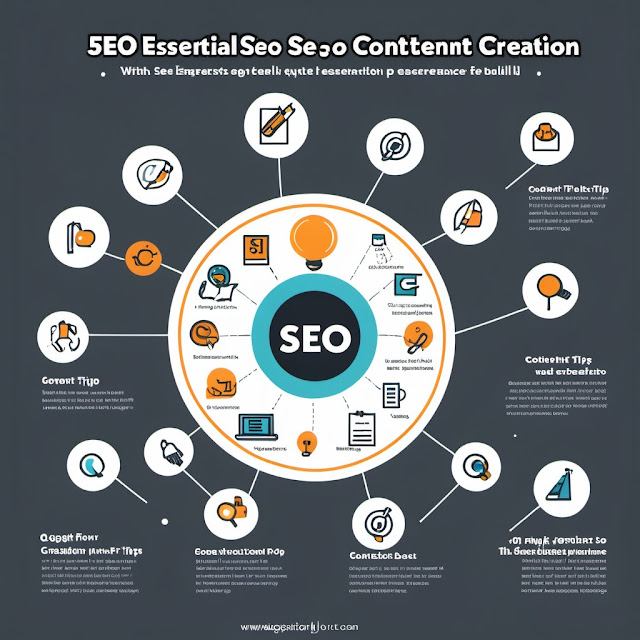5 Essential SEO Content Creation Tips for Ranking Success
In today's digital landscape, creating content that ranks well in search engines is crucial for online visibility and success. Whether you're a seasoned content creator or just starting out, understanding and implementing key SEO principles can significantly boost your content's performance. This post will delve into the five most important factors to consider when crafting SEO-friendly content that not only ranks well but also engages your audience.
1. Content Hierarchy: The Foundation of SEO-Friendly Structure
Why It Matters
A clear content structure is the backbone of SEO-friendly content. It helps both users and search engines navigate and understand your content easily. A well-structured article improves readability, user experience, and ultimately, your search engine rankings.
How to Implement
- Use H1 for your main title: This should be unique for each page and include your primary keyword.
- Use H2 for main sections: Break your content into logical sections, each with an H2 heading.
- Use H3 for subsections: Further divide your content with H3 subheadings for enhanced clarity.
Best Practices
- Ensure a logical flow from H1 to H2 to H3
- Keep your headings concise and descriptive
- Include relevant keywords in your headings naturally
- Aim for a balanced structure with similarly sized sections
By implementing a clear content hierarchy, you're not only making your content more digestible for readers but also helping search engines understand the structure and importance of different parts of your content.
2. Strategic Keyword Placement: The Art of SEO Writing
Why It Matters
Proper keyword placement is crucial for signaling the relevance of your content to search engines. It helps search algorithms understand what your content is about and how it relates to user queries.
How to Implement
- Include your primary keyword in the title (H1): This signals the main topic of your content.
- Use keywords naturally in H2 and H3 headings: This reinforces the relevance of each section.
- Sprinkle keywords throughout your content: Maintain a natural flow and avoid keyword stuffing.
Best Practices
- Conduct thorough keyword research to identify relevant terms
- Focus on long-tail keywords for more specific targeting
- Use semantic keywords and related terms to broaden your content's relevance
- Aim for a keyword density of 1-2% for your primary keyword
- Include keywords in the first 100 words of your content
Remember, while keywords are important, the quality and relevance of your content should always come first. Write for your audience first and optimize for search engines second.
3. Image Optimization: Visual Appeal Meets SEO
Why It Matters
Optimized images not only enhance the visual appeal of your content but also provide additional ranking opportunities. They improve accessibility for users with visual impairments and help search engines understand the context of your visuals.
4. Meta Tags: Your Content's First Impression
Why It Matters
Meta tags provide search engines with concise information about your content. They appear in search engine results pages (SERPs) and can significantly impact your click-through rates.
How to Implement
- Write compelling meta titles (50-60 characters): Include your primary keyword and make it enticing.
- Craft engaging meta descriptions (150-160 characters): Summarize your content and include a call-to-action.
- Include relevant keywords in both title and description: This reinforces your content's relevance.
Best Practices
- Make each meta title and description unique
- Front-load important keywords in your meta tags
- Use action-oriented language in your meta descriptions
- Avoid keyword stuffing in meta tags
- Update meta tags when you significantly update your content
Well-crafted meta tags can significantly improve your content's visibility in search results and encourage users to click through to your page.
5. Quality and Relevance: The Heart of SEO Success
Why It Matters
High-quality, relevant content keeps users engaged and signals value to search engines. It's the foundation of successful SEO and the key to building a loyal audience.
How to Implement
- Create in-depth, original content: Aim for comprehensive coverage of your topic.
- Address user intent and pain points: Understand what your audience is looking for and provide solutions.
- Update content regularly: Keep your information current and relevant.
Best Practices
- Conduct thorough research to ensure accuracy
- Use data, statistics, and expert quotes to support your points
- Include practical examples and case studies
- Encourage user engagement through questions or calls-to-action
- Incorporate multimedia elements like videos or podcasts when relevant
- Link to authoritative sources to back up your claims
- Regularly audit and update your existing content
Conclusion
Creating SEO-friendly content is a multifaceted process that goes beyond simply stuffing keywords into your text. By focusing on these five essential aspects – content hierarchy, strategic keyword placement, image optimization, meta tags, and overall quality and relevance – you'll be well-equipped to create content that not only ranks well in search engines but also provides real value to your audience.
Remember, SEO is an ongoing process. Stay informed about the latest SEO trends and algorithm updates and be prepared to adapt your strategy as needed. With persistence and a commitment to quality, you'll see your content climb the search rankings and attract the audience it deserves.
By implementing these five essential tips consistently in your content creation process, you'll be well on your way to crafting SEO-friendly content that ranks well, engages your audience, and drives meaningful results for your online presence.







Comments
Post a Comment